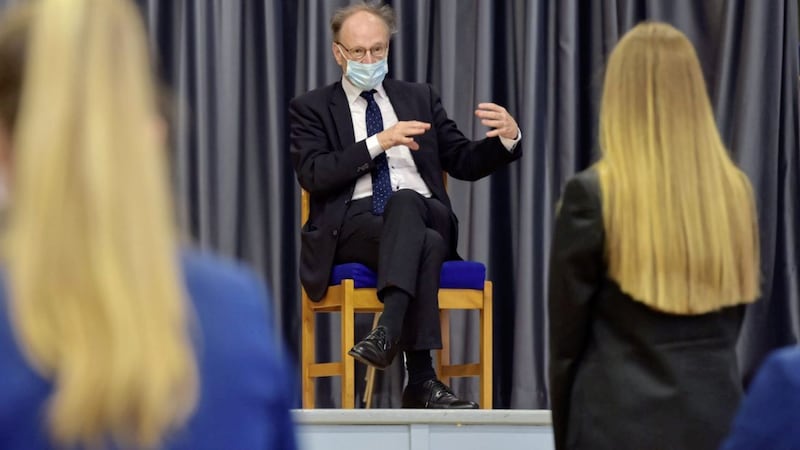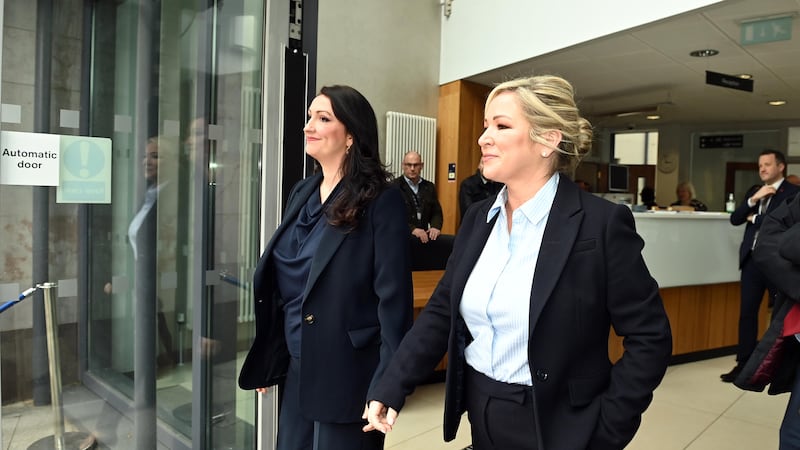One of the most extraordinary political moments of the Covid epidemic in Northern Ireland was when the churches ignored Stormont’s plea to make church buildings available as classrooms.
The call was made in June last year, in executive guidance on reopening schools issued by DUP education minister Peter Weir. Church help would have enabled all teaching to resume with social distancing and followed a model used across Europe, where public buildings such as museums had been requestioned for teaching purposes. Asking churches here to volunteer property made sense, as the vast majority of schools are either controlled by the Catholic Church or have transferor governors from the three main Protestant denominations. Their assistance should have been decisive and easy to arrange - and might have been expected to be willingly given.
‘Transferor’ refers to the transfer of church-owned school buildings to the state generations ago, since when most have been rebuilt at public expense several times, as is also the case in the Catholic sector. This obsolete legacy is why churches have seats on boards, generally outnumbering those of parents and staff.
So it was hardly unreasonable of Stormont to ask for a brief transfer back of church halls and other buildings that would have been ideal for school use and were otherwise closed due to Covid.
As it became clear church property was not forthcoming, schools were forced to issue reopening plans at half-capacity, with two days of teaching per week or pupils rotated week-on week-off. So Weir gave up, demonstrating all the determination he has shown against equally uncooperative grammars and teaching unions. The executive agreed to abolish classroom social distancing and new guidance was issued last August with no mention of church help. Schools reopened almost as normal the following month but the eventual cost was high: without a tested social distancing regime in place they had to shut again for four months from mid-December, while schools across Europe stayed open.
The height of the epidemic was not the time to consider the role of churches in education. Last September, Ulster University published a report that found the church governor system embeds “community separation”. Although this made headlines, attention was understandably elsewhere.
But the four main churches have drawn attention to the issue themselves this week with a joint appeal for calm on the streets.
Their statement called on politicians to “renew their commitment to peace, reconciliation and the protection of the most vulnerable”.
The churches accepted some fault: “As Christian leaders we are conscious of the need to acknowledge the failings of leadership from the churches in our ministry to divided communities.”
However, this was qualified: “We are conscious too that churches are only a small part of the wider civic leadership”.
False modesty, alas. The churches have crucial influence, even in this secular age, via their role in the school system.
The statement provoked inevitable comments about integrated education.
Sceptics might wonder if the young people out rioting last week would have been deterred by spotting classmates across the peace line. The individual impact of integration might be slight but its cumulative effect over decades should be substantial. Those young people could have grown up in a significantly different society had the churches united behind the integrated movement since its inception 40 years ago, instead of treating it with indifference or hostility.
There have been other opportunities dating back to partition for the churches to explore a unified school system. None have been taken due to mutual suspicions: nationalists see partition as the only division; unionists see the Catholic Church is the only obstruction.
The failure to assist schools last June is a chance to move on from this circular argument. It provides an illustration of why the churches are undeserving of their current role. They enjoy an archaic privilege that gives them real power and a veto over change, yet they had no matching sense of responsibility in society’s hour of need. The kindest interpretation is that they have lost faith in their own authority and ability to serve the schools they help to manage.
The churches believe a collective statement demonstrates reconciliation in action but to break the deadlock on segregation, a solo run is required. One of the churches, or just one group of transferor governors, needs to resign their school board seats and state they are getting out of the way to start a serious conversation on reform.









